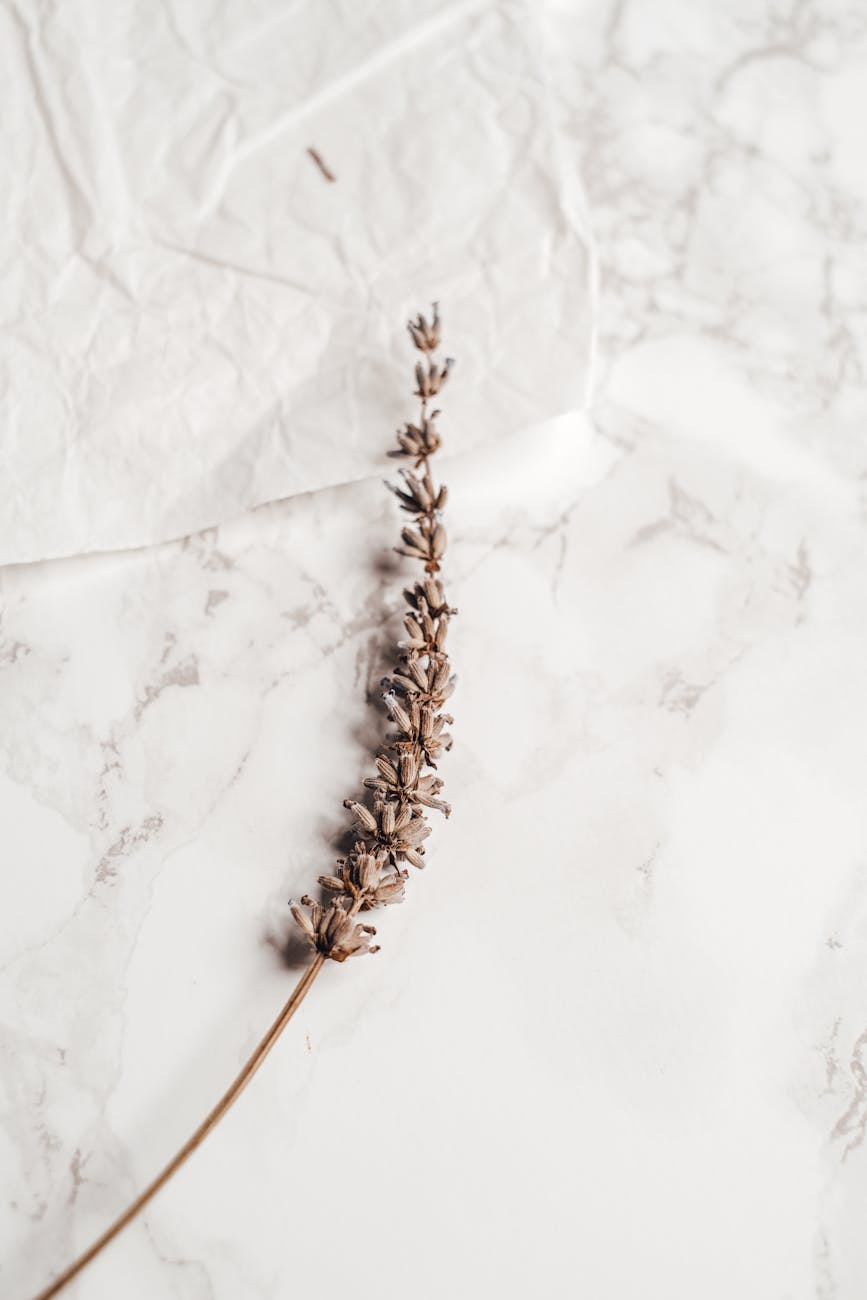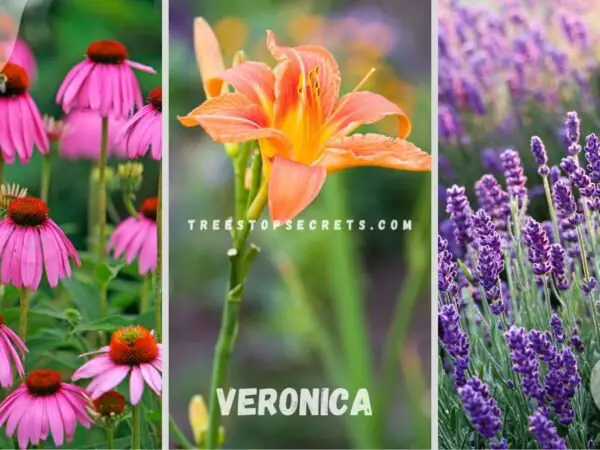Growing Lavender in Pots
Soil and Watering Tips
When it comes to growing lavender in pots, the right soil and watering practices are essential for ensuring healthy, thriving plants.
Lavender thrives on neglect, and the key to watering is to wait until the soil is on the brink of becoming completely dry. Pot size and soil type influence the watering schedule, with environmental conditions also playing a role. Lavender in a pot would rather stand a little drier than too moist. Only when the upper layer of soil has dried out does it need to be watered again (My Garden).
| Factor | Recommendation |
|---|---|
| Soil Type | Gritty, well-draining soil mix |
| Watering Frequency | Infrequently but thoroughly |
| Watering Indicator | Water only when the upper layer of soil is dry |
Lavender despises wet feet, so it is crucial to use a gritty, well-draining soil mix for potted lavender. The soil should be more rock concert than swamp to prevent excess moisture retention. Overwatering can lead to heartbreak for the plant, so it is essential to keep the plant on the drier side to ensure a happy, blooming lavender (Greg).
Environmental Considerations
Environmental factors play a significant role in the successful cultivation of lavender in pots. Lavender prefers a sunny spot where it can receive at least 6 hours of direct sunlight daily. This ensures that the plant remains healthy and produces its characteristic fragrant blooms.
Lavender is also quite hardy and can withstand various weather conditions. However, it's important to ensure that the plant is not exposed to excessive moisture, particularly in the winter months. Outdoor lavender does not need to be watered at all unless it is too dry. The better the soil is drained, the longer the plants will live. Any waterlogging — especially in winter — can kill the fragrant plant (My Garden).
By following these soil and watering tips and considering the environmental needs of lavender, we can create a fragrant oasis with our lavender flower pots.
Types of Lavender for Pots
Choosing the right type of lavender for your pots is essential for a thriving fragrant oasis. Various lavender varieties are suitable for container gardening, each offering unique characteristics and growth habits.
Best Varieties
Several lavender varieties are particularly well-suited for growing in pots. These include:
- Lavandula angustifolia ‘Munstead’
- Lavandula angustifolia ‘Rosea’
- Lavandula angustifolia ‘Thumbelina Leigh’
- Lavandula angustifolia ‘Hidcote’
- Lavandula angustifolia ‘Little Lottie’
- Lavandula angustifolia ‘Nana Alba’
- Lavandula pedunculata subsp. pedunculata
- Lavandula pedunculata ‘Regal Splendour’
- Lavandula pedunculata ‘Ballerina’
These varieties are known for their ability to thrive in containers and offer a range of colors and fragrances (Gardenia).
Size and Placement
Lavender plants vary in size, which influences the type and size of the pot required. Here’s a helpful table to guide you:
| Lavender Variety | Mature Height | Recommended Pot Diameter |
|---|---|---|
| Lavandula angustifolia 'Munstead' | 18" | 12" - 16" |
| Lavandula angustifolia 'Rosea' | 24" | 16" - 20" |
| Lavandula angustifolia 'Thumbelina Leigh' | 12" | 10" - 14" |
| Lavandula angustifolia 'Hidcote' | 24" | 16" - 20" |
| Lavandula angustifolia 'Little Lottie' | 16" | 12" - 16" |
| Lavandula angustifolia 'Nana Alba' | 18" | 12" - 16" |
| Lavandula pedunculata subsp. pedunculata | 36" | 20" - 24" |
| Lavandula pedunculata 'Regal Splendour' | 24" | 16" - 20" |
| Lavandula pedunculata 'Ballerina' | 30" | 18" - 22" |
Larger lavender varieties, such as Lavandula pedunculata subsp. pedunculata, require pots with a diameter of 20 to 24 inches to accommodate their roots and size for optimal blooming. Smaller or dwarf varieties like ‘Thumbelina Leigh’ can thrive in pots as small as 10 to 14 inches in diameter.
Proper placement is also crucial. Lavender plants thrive in well-drained soil and full sunlight, making them ideal for sunny patios, balconies, and garden spots. Ensure your containers have drainage holes to prevent waterlogging, which can harm the plants. Pots can be made of various materials, including ceramic, metal, plastic, or terracotta, each offering different benefits for growth and maintenance.
Lavender Care Guide
For those of us who cherish the calming aroma and beauty of lavender, maintaining our lavender flower pots requires some essential care practices. In this section, we will cover pruning and harvesting, as well as fertilization and repotting.
Pruning and Harvesting
Proper pruning and harvesting are key to keeping our lavender plants healthy and encouraging continuous blooms. We should harvest lavender flower spikes either in the bud stage or after the flowers have opened. To do this, remove the spikes down to the first set of leaves, avoiding cutting into the woody part of the plant. Regularly harvesting flowers encourages more blooms and extends the blooming period.
After the bloom period ends in autumn, a light pruning can be done. Prune back to the woody growth to help young plants direct energy back into the roots. Heavy pruning, up to one-third of the plant, should be avoided until early spring after new green growth has appeared at the base of the lavender plant.
Fertilization and Repotting
While lavender plants thrive in poor soils, potted lavender quickly depletes available nutrients. Occasional fertilization is necessary to keep our plants healthy. We recommend using a liquid organic seaweed or kelp solution for this purpose.
Repotting is also an important aspect of lavender care. It is advisable to repot our lavender plants every two years with new potting medium to replenish nutrients. The best time to repot is before new growth begins in the spring. When repotting, choose a pot about 2 inches larger than the current one.
| Lavender Care Activity | Frequency | Notes |
|---|---|---|
| Pruning | Light: Autumn | Heavy: Early Spring |
| Harvesting | Regularly | Harvest spikes down to the first set of leaves to encourage more blooms |
| Fertilization | Occasionally | Use liquid organic seaweed or kelp solution |
| Repotting | Every 2 years | Repot before new growth in spring with a pot 2 inches larger |
By following these guidelines, we can ensure that our lavender flower pots remain healthy and vibrant, providing us with their delightful fragrance and beauty.
Common Lavender Issues
Lavender flowers are known for their beauty and fragrance, but they can encounter several issues that can affect their health and growth. Here, we address the common diseases and pests that may plague lavender flower pots and provide preventative measures to keep your plants thriving.
Diseases and Pests
Lavender plants can fall victim to various diseases and pests that can compromise their vitality. The most common issues include:
- Description: Root rot is a prevalent problem caused by pathogens like Fusarium spp., Phytophthora spp., Pythium spp., and Rhizoctonia spp. It is especially common in wet, waterlogged soils.
- Symptoms: Wilted, yellowing leaves and mushy roots.
- Regions Affected: Chilly and wet regions like the Northeast and Pacific Northwest (Epic Gardening).
- Crown Rot
- Description: Caused by Phytophthora, crown rot attacks the plant's center, starting at the bottom.
- Symptoms: Browning or yellowing lower leaves that creep up the plant.
- Prevalence: Most common during wet seasons (Epic Gardening).
- Botrytis
- Description: A fungal disease thriving in high humidity and low airflow.
- Symptoms: Gray mold on leaves and stems.
- Prevention: Avoid overwatering, remove infected leaves, and use fungicides (Hopes Grove Nurseries).
- Septoria Leaf Spot
- Description: A fungus that starts with tiny gray spots on leaves.
- Symptoms: Spots spread, causing foliage to die.
- Prevention: Ensure good air circulation, prune interior branches, and maintain proper soil drainage.
- Alfalfa Mosaic Disease
- Description: Transmitted by aphids or unsanitized tools, this disease is highly harmful.
- Symptoms: Yellowing leaves, stunted growth.
- Prevention: Sanitize tools, wear gloves, weed beds regularly, monitor for aphids. Infected plants must be uprooted immediately as there is no cure (Hopes Grove Nurseries).
Preventative Measures
To keep lavender flower pots healthy and vibrant, it's essential to implement effective preventative measures against diseases and pests. Here are some key strategies:
- Proper Watering:
- Avoid overwatering to prevent root and crown rot.
- Ensure pots have good drainage to avoid waterlogged soil.
- Air Circulation:
- Place pots in areas with good airflow to prevent fungal diseases like Botrytis.
- Prune interior branches to improve air circulation.
- Sanitation:
- Regularly clean and sanitize gardening tools to prevent disease transmission.
- Wear gloves and maintain a clean gardening environment.
- Pest Monitoring:
- Regularly check for signs of pests like aphids.
- Use natural or chemical pest control methods as needed.
- Fungicide Use:
- Apply fungicides as a preventative measure, especially in areas prone to high humidity.
| Disease | Pathogen | Symptoms | Prevention |
|---|---|---|---|
| Root Rot | Fusarium spp., Phytophthora spp., Pythium spp., Rhizoctonia spp. | Wilted, yellowing leaves, mushy roots | Avoid overwatering, provide good drainage |
| Crown Rot | Phytophthora | Browning/yellowing lower leaves | Improve soil drainage, avoid waterlogged conditions |
| Botrytis | Fungal | Gray mold | Avoid overwatering, remove infected leaves, use fungicides |
| Septoria Leaf Spot | Fungal | Tiny gray spots, dying foliage | Ensure air circulation, prune, good soil drainage |
| Alfalfa Mosaic Disease | Viral (transmitted by aphids) | Yellowing leaves, stunted growth | Sanitize tools, monitor for aphids, uproot infected plants |
By staying vigilant and implementing these preventative measures, we can keep our lavender flower pots healthy and flourishing.
Additional Tips for Lavender
Ensuring the health and vitality of our lavender flower pots involves paying close attention to sunlight, overwintering, and nutrient management. Here are some essential tips to help you maintain your lavender plants.
Sunlight and Overwintering
Lavender thrives in bright, direct sunlight. Potted lavender should be placed in a sunny spot that receives at least 6 hours of sunlight daily. Proper sunlight is crucial for robust growth and prolific blooming.
If we are growing a variety of lavender that is not winter hardy in our zone, overwintering becomes essential. Here are steps to ensure our lavender survives the colder months:
- Location: Move the pot into a garage or unheated shelter to protect it from freezing temperatures.
- Watering: Reduce watering frequency but do not let the soil dry out completely.
- Light: Ensure the plant still receives some light, even during overwintering.
Nutrient Management
While lavender thrives in poor soils, potted plants can quickly deplete available nutrients. To keep our lavender healthy, we need to manage nutrients effectively:
- Fertilization: Use a liquid organic seaweed or kelp solution occasionally to provide necessary nutrients. Avoid over-fertilizing as it can lead to excessive foliage growth at the expense of flowers.
- Repotting: Repotting every two years with new potting medium helps replenish nutrients. It's best to repot before new growth begins in spring, using a pot about 2 inches larger than the current one (The Spruce).
| Nutrient Management Task | Frequency |
|---|---|
| Fertilization | Occasionally (e.g., once a month during growing season) |
| Repotting | Every 2 years |
By following these tips, we can ensure that our lavender flower pots flourish, providing a fragrant oasis in our spaces.
Image Source: Paid image from CANVA



